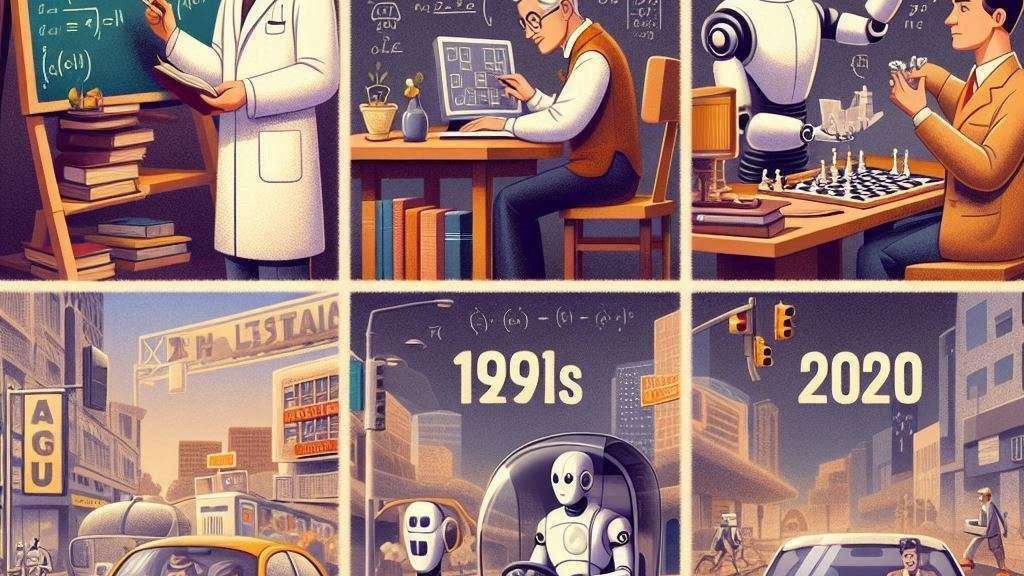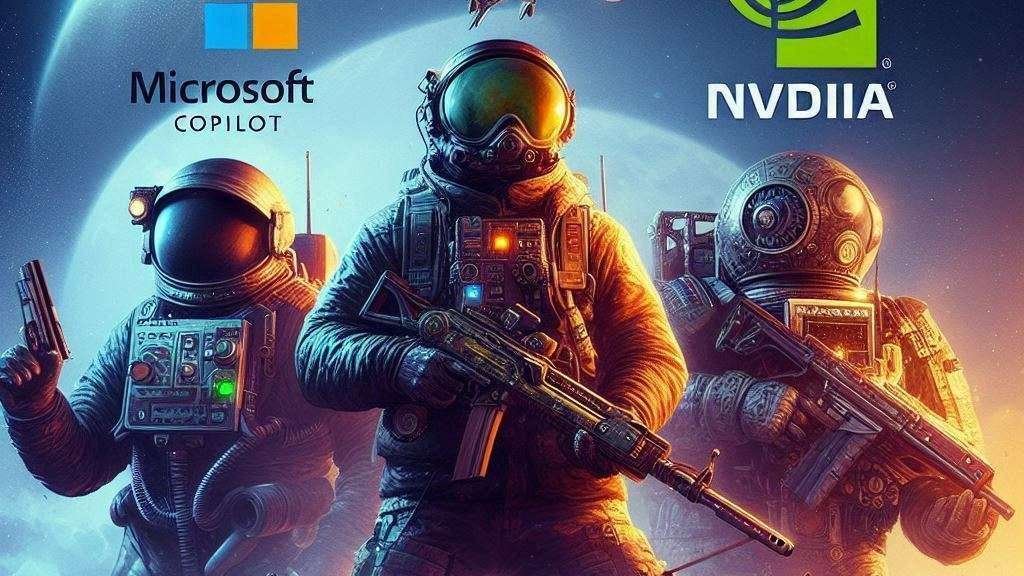The History of AI

The history of artificial intelligence (AI) spans several decades and involves a complex interplay of technological advances, theoretical breakthroughs, and practical applications. Here’s a detailed overview:
1. Early Foundations (1940s-1950s)
- Mathematical Logic and Theoretical Foundations: The conceptual groundwork for AI began with mathematicians and logicians like Alan Turing, who proposed the Turing Test as a criterion for machine intelligence. Turing’s 1950 paper, “Computing Machinery and Intelligence,” is foundational.
- Cybernetics and Early Computing: Norbert Wiener’s work on cybernetics in the 1940s, which studied the control and communication in animals and machines, laid early theoretical foundations.
2. Birth of AI (1956)

- Dartmouth Conference: The field of AI was formally established at the Dartmouth Conference in 1956, organized by John McCarthy, Marvin Minsky, Nathaniel Rochester, and Claude Shannon. The term “artificial intelligence” was coined here.
- Early Programs and Theories: Early AI research produced programs like the Logic Theorist (by Allen Newell and Herbert A. Simon) and the General Problem Solver, which aimed to mimic human problem-solving.
3. Optimism and Early Successes (1950s-1970s)
- Symbolic AI and Expert Systems: Research focused on symbolic AI, where intelligence was seen as the manipulation of symbols. Expert systems, such as Dendral for chemical analysis and MYCIN for medical diagnosis, emerged.
- Perceptrons and Neural Networks: Frank Rosenblatt’s perceptron (an early neural network) showed promise in pattern recognition, but limitations led to skepticism, famously highlighted by Marvin Minsky and Seymour Papert’s 1969 book, “Perceptrons.”
4. The AI Winters (1970s-1980s)

- Funding Cuts and Disillusionment: Overpromised results and underdelivered performance led to reduced funding and interest. This period is known as the AI Winter.
- Challenges in Language Processing and Understanding: Projects like SHRDLU (by Terry Winograd) showcased the difficulty of natural language understanding.
5. Renaissance and New Approaches (1980s-1990s)
- Rebirth of Neural Networks: The backpropagation algorithm revitalized interest in neural networks. Researchers like Geoffrey Hinton played a significant role in this resurgence.
- Advanced Expert Systems and Knowledge-Based Systems: Systems like XCON, used by Digital Equipment Corporation, demonstrated the commercial potential of AI.
- Introduction of Probabilistic Methods: Judea Pearl’s work on Bayesian networks brought a probabilistic approach to AI, improving decision-making processes under uncertainty.
6. Modern AI and Machine Learning (2000s-Present)

- Big Data and Deep Learning: The availability of large datasets and advancements in computing power led to breakthroughs in machine learning. Deep learning, particularly through convolutional neural networks (CNNs) and recurrent neural networks (RNNs), achieved state-of-the-art results in image and speech recognition.
- AI in Everyday Applications: AI technologies have become ubiquitous, powering search engines, virtual assistants (like Siri and Alexa), autonomous vehicles, and more.
- Ethical and Societal Implications: As AI systems have grown more capable, discussions about their ethical use, bias, and impact on employment have become prominent.
7. Current Trends and Future Directions
- AI and Healthcare: AI is making strides in personalized medicine, drug discovery, and diagnostics.
- Natural Language Processing (NLP): Advances in NLP, exemplified by models like GPT (Generative Pre-trained Transformer), have significantly improved language understanding and generation.
- Reinforcement Learning: This approach, where agents learn by interacting with their environment, has seen successes in game-playing AI, such as DeepMind’s AlphaGo.
- General AI and Ethics: Research is ongoing towards achieving artificial general intelligence (AGI) while addressing ethical considerations to ensure safe and fair AI development.
Recent advancements

ChatGPT-4o
GPT-4o (where “o” stands for “omni”) is OpenAI’s flagship model announced in May 2024. It represents a significant leap toward more natural human-computer interaction.
Key features:
- Multimodal Capabilities: GPT-4o can reason across audio, vision, and text simultaneously.
- Real-Time Interaction: It accepts any combination of text, audio, and image inputs and generates corresponding outputs.
- Fast Response Time: It responds to audio inputs in as little as 232 milliseconds, similar to human conversation response time.
- Improved Performance: Matches GPT-4 Turbo’s text performance in English and code, excels in non-English languages, and is 50% cheaper in API usage.
- Vision and Audio Understanding: GPT-4o outperforms existing models in vision and audio comprehension2.
Copilot

Microsoft Copilot (formerly known as Bing Chat) is an AI-powered code-writing assistant.
Developed by OpenAI and integrated into Microsoft’s tools, Copilot assists developers by suggesting code snippets, autocompleting code, and providing context-aware recommendations.
It enhances productivity and collaboration during software development.
NVIDIA GPUs and AI
- NVIDIA’s GPUs, especially the RTX series, play a pivotal role in AI development.
- GPU Acceleration: RTX GPUs accelerate training and deploying AI models.
- Generative AI: NVIDIA offers tools like RTX Remix for generative AI texture creation and NVIDIA NeMo LLM for assisting coders.
- Real-Time Rendering: RTX enables real-time viewport rendering, ray reconstruction, and upscaling in 3D creative apps.
- Game Optimization: DLSS (Deep Learning Super Sampling) enhances gaming performance in over 300 games.
- AI for Developers: Developers can build their own AI models or use chatbots for various tasks, all powered by RTX GPUs
Conclusion
The history of AI is characterized by cycles of optimism and setbacks, driven by both technological capabilities and theoretical insights. Today, AI is an integral part of various industries, continually pushing the boundaries of what machines can achieve.
